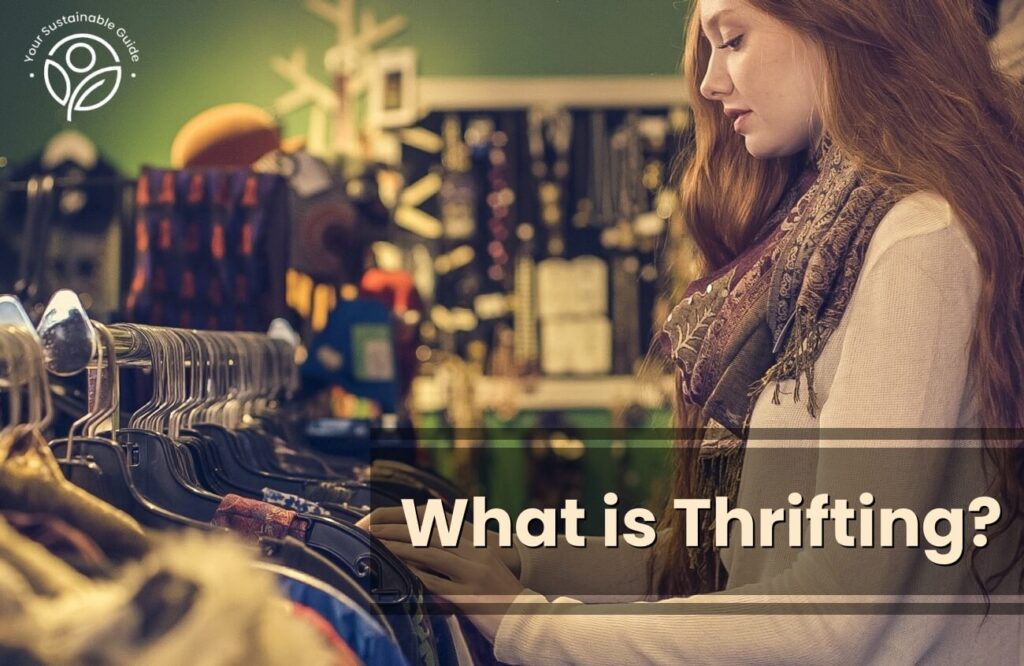Are you tired of shopping at the same old stores and wearing the same outfits as everyone else? Do you want to add some unique pieces to your wardrobe without breaking the bank? If so, it’s time to know what is thrifting and start immediately on it! Thrifting is the art of finding hidden gems at secondhand stores, garage sales, and flea markets. It takes patience, creativity, and a bit of luck, but the rewards are well worth the effort. Not only will you save money, but you’ll also be doing your part to reduce waste and support sustainable fashion. In this beginner’s guide, we’ll take you through the basics of thrifting, from where to look to how to spot a great find. So grab your reusable tote bag and get ready to discover the art of thrifting!
- What is Thrifting and Why is it Important?
- Why Go Thrift Shopping?
- Where to Thrift
- How to Prepare for a Successful Thrift Trip
- Tips for Finding Hidden Gems while Thrifting and Assessing the Quality & Value of Thrifted Items
- How to Incorporate Thrifted Pieces into Your Wardrobe
- Sustainable Fashion and the Role of Thrifting
- Busting Some Common Misconceptions About Thrifting
- Why Everyone Should Give Thrifting a Try
What is Thrifting and Why is it Important?
Thrifting refers to the act of purchasing secondhand goods, such as clothing, from thrift shops or other sources. It’s a fantastic way to save money while also promoting sustainable fashion. By buying used items, you’re not only helping to keep them out of landfills but also decreasing the need to produce new goods. This has a positive impact on the environment and helps to foster a circular economy.
Moreover, thrifting allows you to find unique pieces that are not commonly available. As a result, you can curate a distinctive wardrobe that reflects your individual style, rather than simply following the latest fashion trends. Additionally, by shopping at local thrift stores that small business owners or non-profit organizations often run, you’re supporting the community and contributing to the local economy.
Why Go Thrift Shopping?
Aside from the environmental and economic benefits, thrifting has a lot of other advantages as well. For one, it can be a fun and exciting adventure. You never know what you might find, and the thrill of the hunt can be addicting. Thrifting can also be a great way to connect with your local community. You might bump into friends or meet new people while browsing the racks.
Another benefit of thrifting is that it can be a way to express your creativity. When you find a unique piece, you can style it in a way that is all your own. You can mix and match thrifted items with pieces you already own to create outfits that are truly unique.
There are so many advantages to thrift shopping that I could go on and on. So, if you’re interested, let’s walk through some of them in detail.
Thrift shopping is an incredible way of incorporating sustainability into your lifestyle. It is the easiest way to go green as you’re giving second life to existing items. Nothing can be more mindful than diverting “good-conditioned” or “easily repairable” products from landfills and keeping them in circulation. No new manufacturing means the preservation of water, natural resources, and energy and, of course, valuing of antique styles.
The Right Approach
With thrifting, you help a good cause. First, this approach encourages you to stay away from fleeting trends and stops you from spending volumes. Next, you learn to dispose of your articles mindfully and help those in need by donating them to thrift stores.
Billions of underprivileged people worldwide struggle to find essentials like clothing, shoes, blankets and so on. Unused items donated to charitable thrift stores allow these people to lead a life of basic comfort, either for free or at a minimal cost. With a wide range of things to look for at thrift stores, many compassionate people buy these articles in bulk and donate them to shelters, non-profits and homeless people.
Affordability
Thrift stores are unbelievably affordable and a great way of achieving financial goals. Many expensive and valuable items like designer garments, luxury bags, precious gemstone jewelry or an old-fashioned piece of furniture are often misunderstood as regular articles and priced super-cheap. So you can not only find fantastic apparel to add to your closet but also get some vintage home décor items with unique styles and designs.
Collectors’ Hobby
Rare finds and limited-edition pieces have always been the hype. And with everybody wanting to flaunt their exclusive pieces, thrifting allows you the same experience without breaking the bank. Whether it’s an adjustable height lamp, a grandfather’s clock, or a Victorian style bed, you can build a one-of-a-kind space with pieces from different eras, depicting unique vintage styles at half the cost of new. Plus, they carry so much history and literally have a story to tell. No wonder antique collectors are obsessed with such items.
Repurpose & Revive
Agreed, many vintage pieces come with visible signs of wear of tear, but that’s why they’re vintage, isn’t it? Articles that date back to even fifty years from now were built to last and are pretty durable, but everything needs some polish, some fixes and some belief to continue lasting. It needs an expert eye to see the potential under the dust-covered or pale-coloured heritage items. And they can be easily revived to serve you for years. However, always make sure to double-check before buying something, because sometimes items have damages that are beyond repair. Afterall, you don’t want to waste money on something you can’t use.
The Vintage Advantage
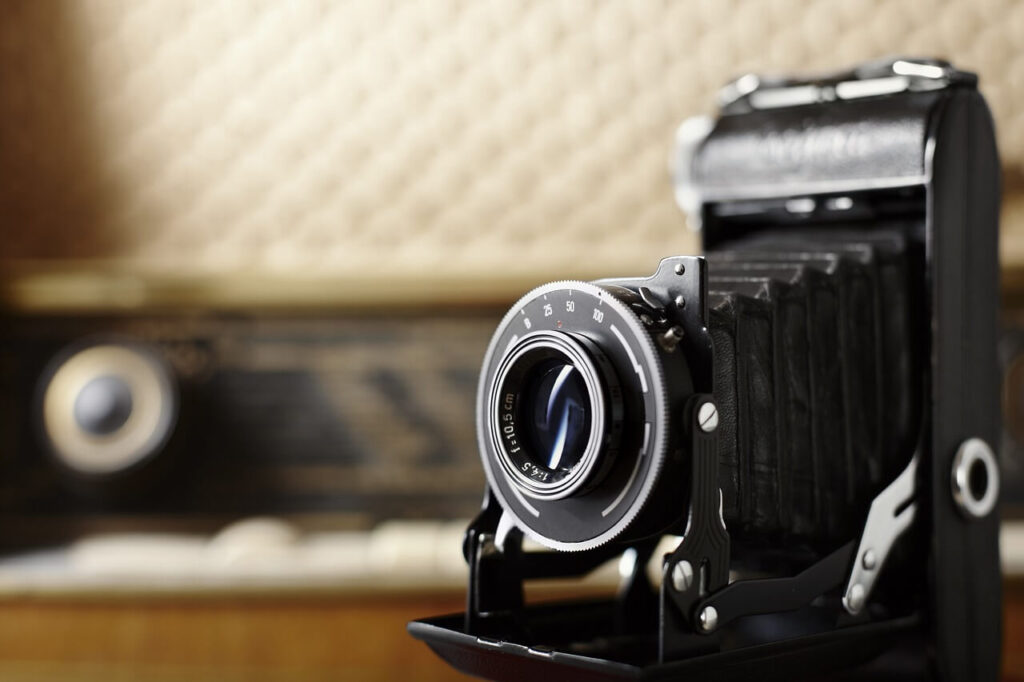
When you go thrifting, you can frequently find products produced many years ago when manufacturers were more concerned with sturdiness and longevity than rapid, throwaway fashion. This means that antique things, such as clothing, furniture, and kitchenware, may be better crafted and survive longer than modern versions.
Vintage objects, in addition to being more durable, typically have a distinct style and look that cannot be found in today’s mass-produced goods. Goodwill shopping allows you to explore other eras and styles while also finding things that represent your uniqueness and personal taste.
Make Money By Reselling
Many people scour online and local thrift stores for valuable finds that can be refurbished and sold to potential buyers. This business is quite profitable and has great growth prospects. Why? Well, every conscious consumer is trying to go back to their roots and embrace sustainability. With a sea of rare items available, you can strategically invest in pieces from thrift stores and flip them to these people who don’t have the time to dig through piles of articles for themselves.
Plus, collectors are always on the lookout for treasured pieces, and online auctions are a great way to cater to a global clientele. Reselling thrift store items is a side gig for many people, but there are also those for whom it’s a full-time business. All you need is to be armed with the tips and tricks to find winning items to swap.

Where to Thrift
There are numerous options available to go thrifting. Secondhand stores, garage sales, flea markets and online thrift stores are the most favored ones.
The easiest and probably the most convenient option is to shop at secondhand stores. These stores are well-organized and it is easy to shop across all the varieties on offer in an effortless manner and you are sure to find some great deals. Goodwill and Salvation Army are two of the largest thrift store chains in the US. But there are many smaller, locally-owned stores that are worth checking out too.
Garage sales and estate sales are also some of the great places where you can find hidden treasures. Typically held on weekends, you can find listings of these sales in your local newspaper or online.
Thrift shopping at flea markets is also a favorite pastime of many as it is a fun way to spend a weekend morning. Find vintage clothing, books, antiques, old furniture and what not at flea markets!
Online thrift stores have become an increasingly popular destination in recent years due to its convenience and accessibility. Online thrift stores offer a wide variety of pre-owned and vintage items, ranging from clothing and accessories to vinyl records, old DVDs, vintage cameras; the list is endless! With the ability to browse and shop from the comfort of your own home, online thrifting allows you to easily find hidden gems and unique pieces without having to physically search through racks or shelves. Additionally, many online thrift stores offer competitive prices and eco-friendly alternatives to fast fashion. Overall, thrifting at online thrift stores can be a great way to shop sustainably while also adding some personality to your wardrobe or home.
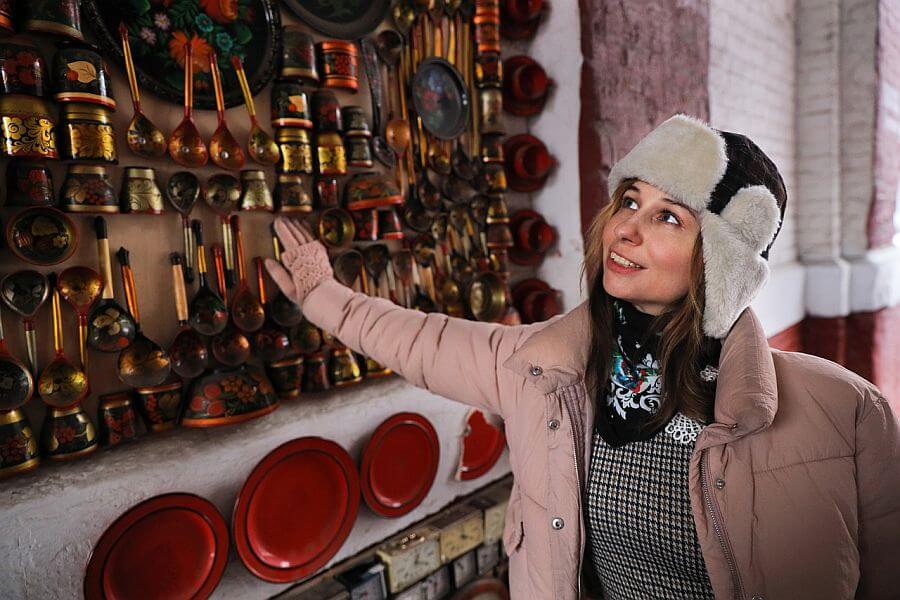
How to Prepare for a Successful Thrift Trip
There are certain preparations to do before you go thrift shopping. It’s great to make a mental note of things to buy at thrift stores beforehand. This prevents getting overwhelmed by the huge volume of items available in thrift stores and staying focused. Make a list of the items you have in mind, have a general idea of the colors and styles of clothes you may be interested in or genres of books etc.
Plan well so that you have ample time on hand to go over things at leisure. If you are buying clothing, remember well that thrift store dressing rooms can be very busy and confined. As such, wear something comfortable making it easy to try clothing on over it. Do not forget to bring a reusable carryall bag to carry your things.
Tips for Finding Hidden Gems while Thrifting and Assessing the Quality & Value of Thrifted Items
Thrifting is an excellent method for finding only-of-a-kind and vintage goods at a fraction of their original prices. Discovering hidden treasures at thrift stores is truly an art. Follow these simple tips to help you locate the finest of the bargains:
- Research the thrift store: Do some research before going to a thrift store. This way, you can find out which stores offer the finest assortment of the things you are looking for.
- Do not rush: Take your time when assessing the quality and value of thrifted items. Examine the item thoroughly and make an informed decision.
- Look for quality materials – To check if a selected item is made from natural fibers like cotton, wool, or silk, check its label. Always prefer these materials being more durable and of higher quality than synthetic materials.
- Be quality conscious: Be careful about the quality of the items you are buying. Looking for damage while eying items like furniture or home décor, rips, stains, fading, pilling, stretching, even seams, finished edges in clothing, torn pages from a book etc. are some of the things that do not need very close inspection. Select those things that can be easily fixed and avoid those that are beyond repair.
- Check efficiency: For clothing, test buttons, zippers, pockets etc. Test electrical appliances. Check moving parts if buying hardware for home workshops, and so on…
- Men’s section – Many a time, the men’s section holds surprises in the form of oversized sweaters, blazers, and other items that can be mixed and matched in a variety of styles.
- Look for exclusive items: Keep an eye out for items that catch your eye for their exclusiveness. These items may not be very costly or fancy, but can still be those gems that can add character and charm to your home or wardrobe.
- Consider alterations: If you find an item you love but it doesn’t quite fit, consider whether it can be altered to fit you better. This can turn an otherwise ordinary item into a hidden gem.
- Don’t be afraid to dig: Some of the best finds are buried deep within the piles of items. Don’t be afraid to get your hands dirty and dig through the racks and shelves to find hidden gems.
- Consider the style and design: Consider whether the item is versatile and can be worn with a variety of outfits. Also, consider whether the style and design are timeless or if they are likely to go out of fashion quickly.
- Research the item: If you’re unsure about the quality or value of an item, do some research. Look up the brand or designer to get an idea of the item’s original value and quality standards.
- Consider the price: Consider whether the price of the item is fair based on its quality and condition. While some items may be priced higher due to their brand or designer, others may not be worth the investment.
- Trust your instincts: Ultimately, trust your instincts when assessing the quality and value of thrifted items. If something seems too good to be true or doesn’t feel like a good investment, it’s likely not worth it.
How to Incorporate Thrifted Pieces into Your Wardrobe
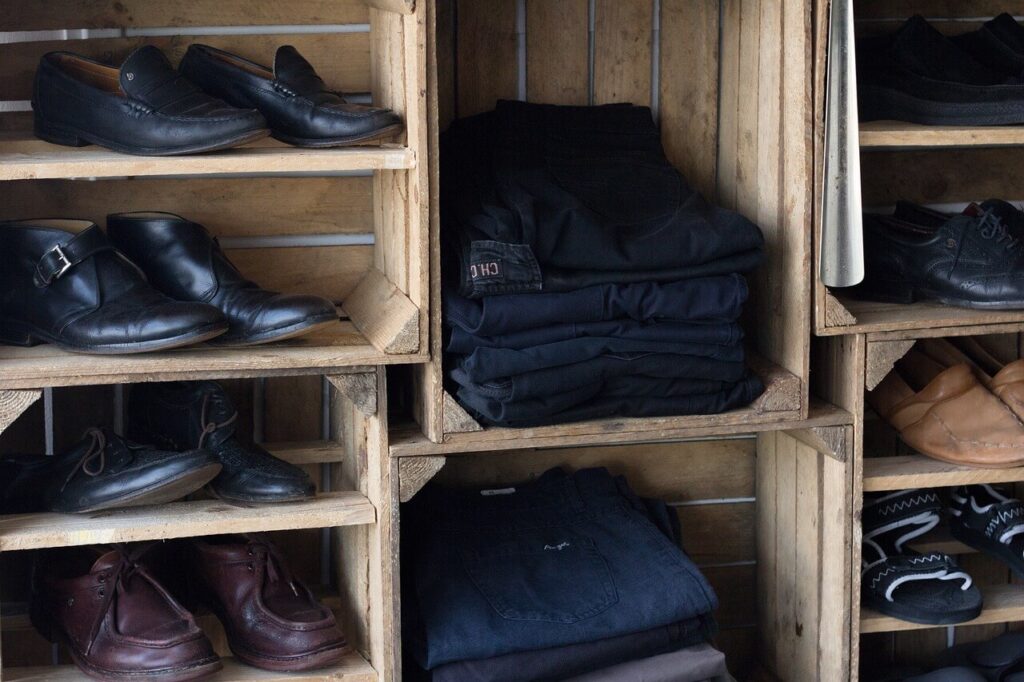
Once you’ve found some great thrifted items, it’s time to start incorporating them into your wardrobe. Here are a few tips:
- Start with basic thrifted pieces: Incorporate basic thrifted pieces like jeans, t-shirts, and blouses into your wardrobe. These items are easy to style and can be paired with other pieces in your closet.
- Mix and match: Mix thrifted pieces with items you already own to create unique and personalized looks. Experiment with different combinations to find what works best for you.
- Accessorize: Add accessories like belts, scarves, and jewelry to complete your thrifted looks. Accessories can elevate a thrifted outfit and make it look more polished and put together.
- Tailor thrifted items: If a thrifted piece doesn’t fit you perfectly, consider getting it tailored. Tailoring can transform a thrifted piece into a customized item that fits you perfectly.
- Layer thrifted pieces: Layering thrifted pieces can create depth and interest in your outfit. Try layering a thrifted sweater over a thrifted dress or blouse for a cozy and stylish look.
- Embrace vintage: Incorporate vintage thrifted pieces into your wardrobe for a unique and timeless look. Vintage pieces can add character and personality to your outfits.
- Play with textures: Mix and match different textures like denim, wool, and silk to add depth and interest to your thrifted looks. Texture can make an outfit look more dynamic and visually appealing.
- Go for alterations by all means: There is no harm in altering or enhancing thrifted pieces to suit your taste and style. Dye a skirt, paint a stool, add enhancements. Be creative to give a new look to a thrifted item.
- An adaptable & enduring wardrobe: Use the thrifted pieces for creating a capsule wardrobe to simplify your fashion choices and save time in the morning. Whether you’re headed to work or a night out with friends, you’ll have plenty of options to choose from without having to sift through a cluttered closet.
- Have fun: Thrifting can be a fun and exciting experience that lets you be creative and explore new styles. Remember, you are helping the local business and making a positive impact by reducing your fashion footprint and having fun at the same time.
Sustainable Fashion and the Role of Thrifting
In addition to reducing waste and supporting local businesses, thrifting also allows for unique and personalized fashion choices. Thrift stores offer a wide variety of styles and eras, allowing individuals to create their own one-of-a-kind looks. By incorporating thrifted pieces into their wardrobes, individuals can express their personal style while also reducing their environmental impact.
Moreover, thrifting also promotes ethical and fair labor practices in the fashion industry. When you buy secondhand items, you are not contributing to the demand for fast fashion and the exploitation of workers in sweatshops. By reducing demand for new items, thrifting helps to shift the focus to more sustainable and ethical production practices.
Thrifting plays a crucial role in sustainable fashion. It promotes environmental sustainability, supports local businesses and non-profit organizations, and allows for unique and personalized fashion choices. By incorporating thrifted pieces into their wardrobes, individuals can reduce their environmental impact and promote ethical and fair labor practices in the fashion industry.
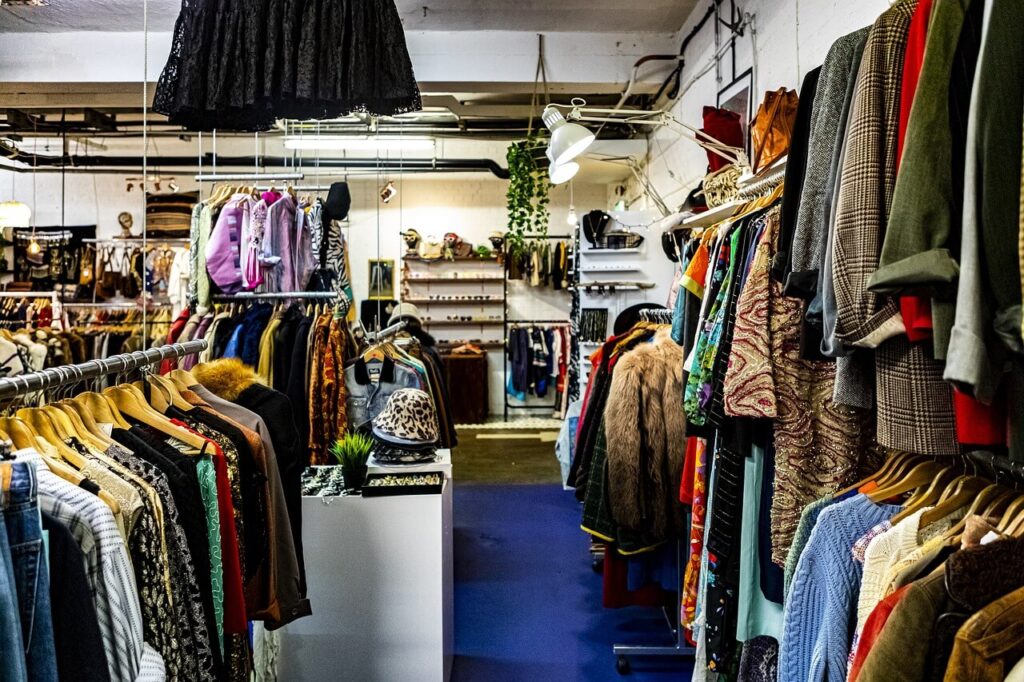
Busting Some Common Misconceptions About Thrifting
Some common misconceptions about thrifting can discourage people from giving it a try. Here are a few of them:
- Thrifting is dirty and unhygienic: While it’s true that thrift stores sell second-hand items, most of the items are cleaned and sanitized before they are put up for sale. Many thrift stores have strict guidelines that require them to clean and sanitize all items before putting them on display.
- Thrifting is mainly for those who cannot afford to purchase new items: Oh! Another one here! Thrifting is for everyone, not only those who cannot afford to buy new stuff. Thrifting is an excellent way to save money, locate one-of-a-kind products, and even benefit the environment by eliminating waste.
- Thrift stores are always messy and unorganized: This is not always the case. While some secondhand stores may be untidy and messy, many thrift stores feature well-organized and well-maintained displays. Some even take extra efforts to organize things by color, size, and style to make it simpler for customers to locate what they’re searching for.
- Isn’t thrifting time-consuming and unworthy of the effort?: While thrifting might take time, it is well worth the effort. Thrifting can be a thrilling and exciting experience, and you never know what gems you could come upon. Furthermore, thrifting is an excellent method to save money and lessen your carbon footprint.
- Thrifting is only for retro or old styles: While thrift shops are known for their antique and retro things, they also sell trendy fashions. Thrift stores provide current fashion trends at a fraction of the expense of buying new. Furthermore, by combining old and modern items, you may create one-of-a-kind and individualized ensembles from clothing, shoes, accessories, and even unused brand new goods found at thrift stores.
- Thrift shops only sell low-quality goods: Thrift stores sell a huge variety of products of varying qualities. However, a customer must evaluate the things and judge their quality in a thorough manner before purchase.
- Thrift stores don’t have anything for men: In fact, shirts, slacks, coats, and accessories such as ties and belts for men are available in almost all thrift stores along with other clothing. However, the variety may vary depending upon the store’s location and size. Thrift stores can be terrific locations for guys to locate unusual and economical clothing alternatives, but it may require some patience and searching through the racks.
- Thrift stores only sell items that are out of season: In fact, thrift stores do have apparel for all seasons and events. With patience and enough time on hand to go through all the items on display, it is not really difficult to find what you are looking for. You are sure to find winter jackets, bikinis and all the seasonal assortments in a thrift shop irrespective of the season.
Why Everyone Should Give Thrifting a Try
Thrifting is a fun, affordable, and sustainable way to update your wardrobe. It allows you to find unique items that reflect your personal style, while also supporting local businesses and reducing waste. With some patience and a creative mind, you will undoubtedly find some fantastic bargains in secondhand stores. Do skip the visit to a mall and scout your local thrift store for all the good and sustainable reasons. Be prepared to get a surprise!

